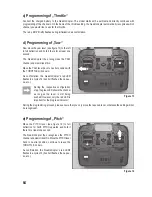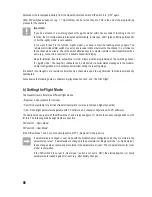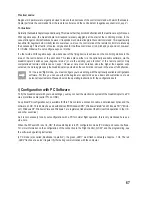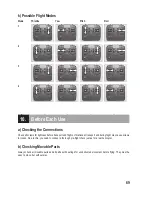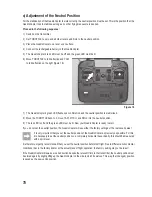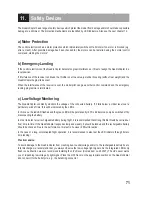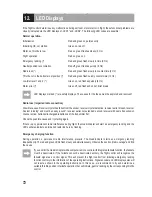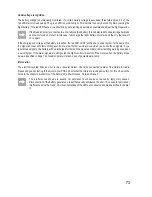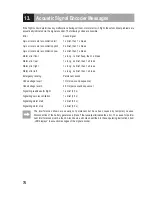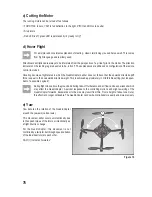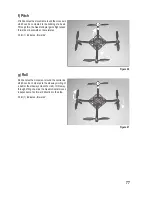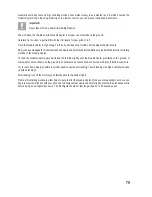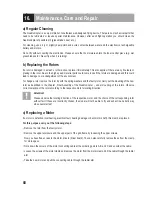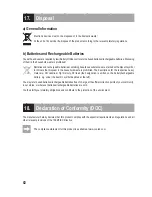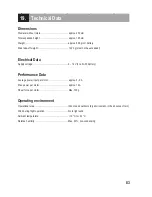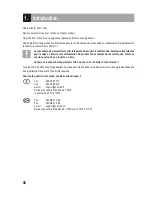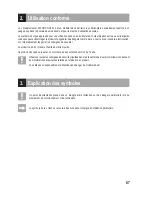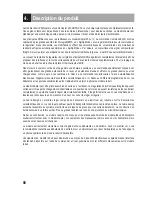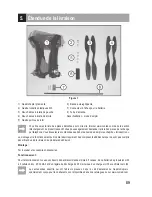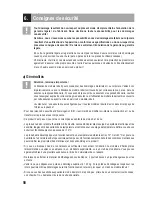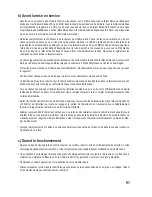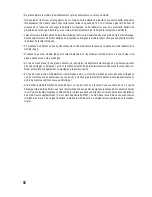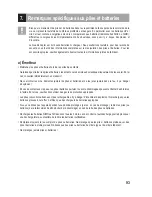
78
15. The First Flight
The first flight test should be made with the sensors on (function „agility mode“ off) to get used to the flight characteristics.
After getting used to them, activate the „agility mode“ function on your remote control transmitter at a sufficient distance
from the ground. The sensors are now limited in their function. Your QuadroCopter now reacts similar to a helicopter
and the control reactions are much more agile.
If the flight characteristics that prevail in „agility mode“ are not yet 100% controllable for you, you may switch on the
sensors again in flight at any time. The QuadroCopter then returns to the usual flight and control characteristics.
In „agility mode“, the QuadroCopter can be used for simple freestyle flying (loopings and rolls). Such flight figures
should, however, be performed at a sufficient height.
Important!
Before switching on the transmitter, please set the throttle stick to „motor off“ and all trim levers of the pilot
stick to zero (mid trimming). Otherwise, the QuadroCopter may not recognise the transmitter after the flight
battery is connected.
Attention!
The flight characteristics with active „Agility mode“ function are not suitable for beginners. If you do not
have sufficient flight experience with QuadroCopters and/or helicopters, we recommend performing the
first flights with active „agility mode“ with appropriate care.
In contrast to freestyle-capable helicopters, never reduce the throttle during a looping or roll while the QuadroCopter is
on its back, since the flight motions are only achieved by speed changes of the rotors. If the throttle is too low in the
reverse position, the speed changes of the individual rotors by flight control possible or required for the flight figures
can no longer be achieved. The QuadroCopter can no longer be controlled in such cases!
Observe particularly good battery attachment to your QuadroCopter to reliably prevent loosening or slipping of the
battery.
Switch on the remote control. Then connect the flight battery. The QuadroCopter then performs a short self-test after
which the green LED is permanently lit. In case of an error, the LEDs flash.
If an error occurs, the rechargeable battery should be disconnected and connected again after the error is eliminated
(e.g. throttle not in zero position). In case of an error, the motors cannot be started again for safety reasons. Please
ensure that the QuadroCopter stands as level as possible when the rechargeable battery is connected.
Until the green LED lights up, all sensors are being internally aligned and the QuadroCopter should not be moved
during this time. If the place of take-off is uneven, it is recommended that you level out the surface and save the neutral
position through full throttle/yaw right (see chapter „set neutral position“).
Start the motors (with throttle on zero, yaw left) and let the motors run at idling speed. Check the running of the rotors
once again. All rotors should run smoothly on one level without the QuadroCopter vibrating.
If a motor does not start, turn the motors off again and move the rotor of the non-starting motor to a quarter rotation
with your hand. Then start the motors again.
Ideally, now slowly increase the speed of the rotors (the throttle) of the QuadroCopter until you can see a slight
increase of altitude. Test the roll and yaw directions just before the QuadroCopter starts to hover to ensure that the
transmitter is correctly set and there is no channel inverting (control signals are reversed).
Summary of Contents for 450 ARF QC09
Page 166: ...166 ...
Page 167: ...167 ...

